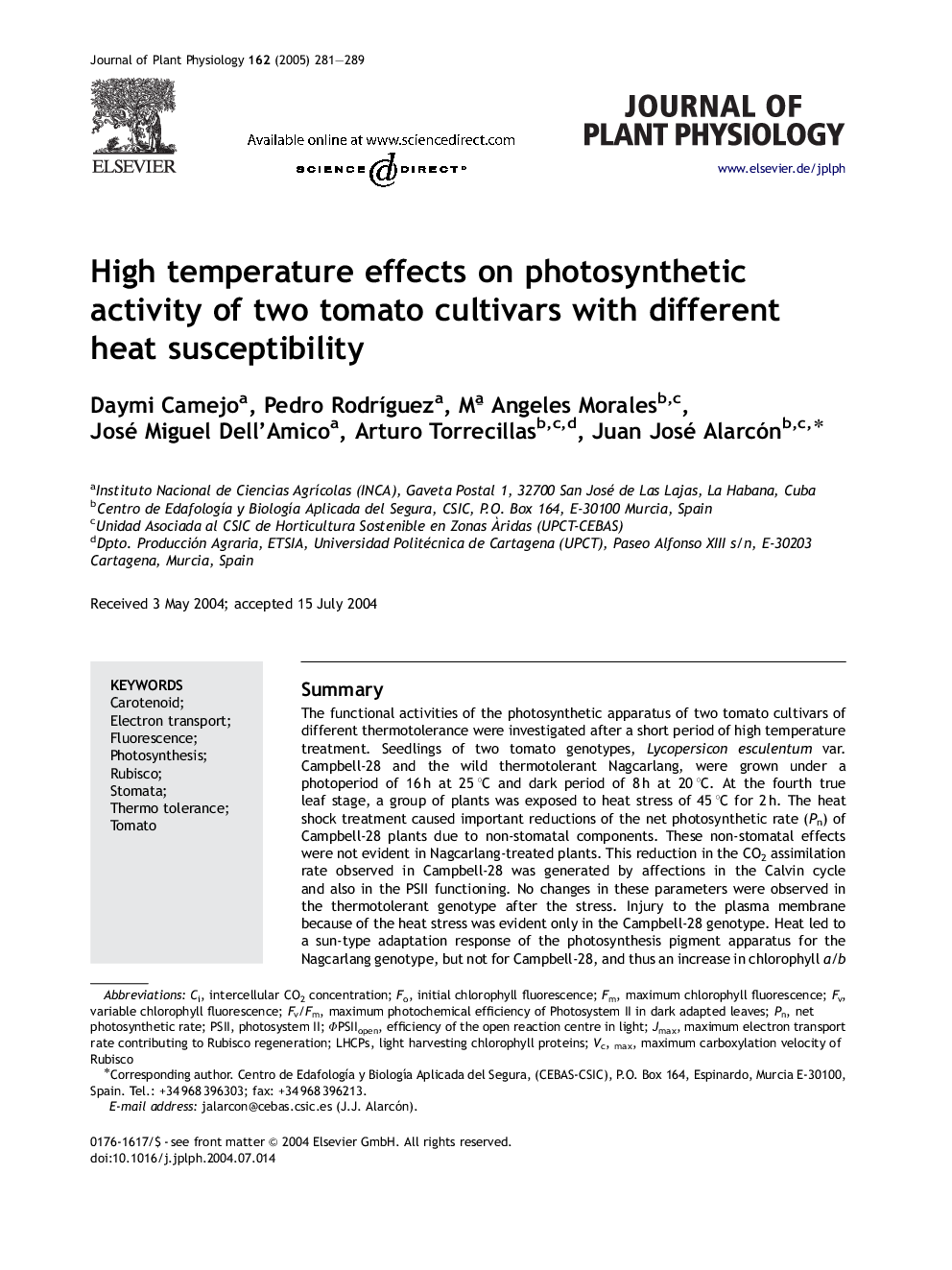| Article ID | Journal | Published Year | Pages | File Type |
|---|---|---|---|---|
| 10877336 | Journal of Plant Physiology | 2005 | 9 Pages |
Abstract
The functional activities of the photosynthetic apparatus of two tomato cultivars of different thermotolerance were investigated after a short period of high temperature treatment. Seedlings of two tomato genotypes, Lycopersicon esculentum var. Campbell-28 and the wild thermotolerant Nagcarlang, were grown under a photoperiod of 16 h at 25 °C and dark period of 8 h at 20 °C. At the fourth true leaf stage, a group of plants was exposed to heat stress of 45 °C for 2 h. The heat shock treatment caused important reductions of the net photosynthetic rate (Pn) of Campbell-28 plants due to non-stomatal components. These non-stomatal effects were not evident in Nagcarlang-treated plants. This reduction in the CO2 assimilation rate observed in Campbell-28 was generated by affections in the Calvin cycle and also in the PSII functioning. No changes in these parameters were observed in the thermotolerant genotype after the stress. Injury to the plasma membrane because of the heat stress was evident only in the Campbell-28 genotype. Heat led to a sun-type adaptation response of the photosynthesis pigment apparatus for the Nagcarlang genotype, but not for Campbell-28, and thus an increase in chlorophyll a/b ratio and a decrease in chlorophyll/carotenoid ratio were shown in Nagcarlang stressed plants.
Keywords
Related Topics
Life Sciences
Agricultural and Biological Sciences
Agronomy and Crop Science
Authors
Daymi Camejo, Pedro RodrÃguez, Mª Angeles Morales, José Miguel Dell'Amico, Arturo Torrecillas, Juan José Alarcón,
